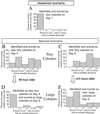Amplification-mutagenesis: evidence that "directed" adaptive mutation and general hypermutability result from growth with a selected gene amplification
- PMID: 11830643
- PMCID: PMC122336
- DOI: 10.1073/pnas.032680899
Amplification-mutagenesis: evidence that "directed" adaptive mutation and general hypermutability result from growth with a selected gene amplification
Abstract
When a particular lac mutant of Escherichia coli starves in the presence of lactose, nongrowing cells appear to direct mutations preferentially to sites that allow growth (adaptive mutation). This observation suggested that growth limitation stimulates mutability. Evidence is provided here that this behavior is actually caused by a standard Darwinian process in which natural selection acts in three sequential steps. First, growth limitation favors growth of a subpopulation with an amplification of the mutant lac gene; next, it favors cells with a lac(+) revertant allele within the amplified array. Finally, it favors loss of mutant copies until a stable haploid lac(+) revertant arises and overgrows the colony. By increasing the lac copy number, selection enhances the likelihood of reversion within each developing clone. This sequence of events appears to direct mutations to useful sites. General mutagenesis is a side-effect of growth with an amplification (SOS induction). The F' plasmid, which carries lac, contributes by stimulating gene duplication and amplification. Selective stress has no direct effect on mutation rate or target specificity, but acts to favor a succession of cell types with progressively improved growth on lactose. The sequence of events--amplification, mutation, segregation--may help to explain both the origins of some cancers and the evolution of new genes under selection.
Figures




References
-
- Cairns J, Overbaugh J, Miller S. Nature (London) 1988;335:142–145. - PubMed
Publication types
MeSH terms
Substances
Grants and funding
LinkOut - more resources
Full Text Sources
Other Literature Sources

